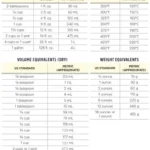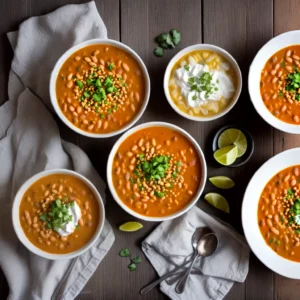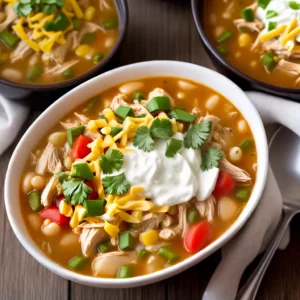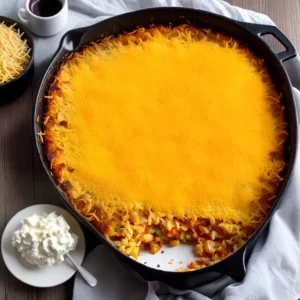How Many Grams Are in an Ounce
In this comprehensive guide, I’ll answer the question of how many grams are in an ounce. As a master chef, I understand the importance of accurate measurements in cooking and baking. Join me as we delve into the world of measurement conversion and explore the relationship between grams and ounces.
Key Takeaways – How Many Grams Are in an Ounce:
- One ounce is equal to 28 grams in weight conversion.
- Grams are commonly used in the metric system, while ounces are primarily used in the United States.
- Using a kitchen scale that can switch between grams and ounces is the most accurate way to measure dry ingredients.
- A conversion chart is provided for quick reference when converting between grams and ounces.
- Conversions for specific ingredients such as protein, chicken, meat, liquid, butter, chocolate, and sugar are also included.
Understanding Grams and Ounces
When it comes to cooking and baking, accurate measurements are essential for achieving delicious results. Understanding the relationship between grams and ounces is fundamental, as these units of weight are commonly used in recipes around the world. Let’s explore the basics of grams and ounces to learn how to make precise conversions.
Grams: Grams are a unit of weight or mass used in the metric system. In cooking, they are often used to measure dry ingredients, such as flour, sugar, or spices. Grams provide a precise measurement, allowing for consistency in recipes.
Ounces: Ounces, on the other hand, are primarily used in the United States and in the British imperial system. They are commonly used to measure both dry and liquid ingredients in recipes. Ounces can also be used to measure the weight of ingredients, such as meat or cheese.
To convert between grams and ounces, it’s important to know the conversion factor: 1 ounce is equal to 28 grams. This means that if you have a certain weight in grams, you can divide it by 28 to find its equivalent weight in ounces. Conversely, if you have a weight in ounces, you can multiply it by 28 to find its equivalent weight in grams.

A conversion chart, like the one provided, can be a handy tool in the kitchen for quick and accurate measurements. Remember, using a kitchen scale that can switch between grams and ounces is the most reliable way to measure dry ingredients, ensuring precision and consistent results in your culinary creations.
Converting Grams to Ounces
When it comes to converting grams to ounces, it’s important to know that one ounce is equal to 28 grams. This conversion is widely used in cooking and baking, especially when following recipes from around the world that use different measurement systems. To make the conversion process easier, I’ve prepared a handy chart that provides approximate measurements for converting grams to ounces:
| Grams | Ounces |
|---|---|
| 1 gram | 0.04 ounce |
| 10 grams | 0.35 ounce |
| 25 grams | 0.88 ounce |
| 50 grams | 1.76 ounces |
| 100 grams | 3.53 ounces |
| 250 grams | 8.82 ounces |
Using this chart, you can easily convert any measurement from grams to ounces and vice versa. Simply find the weight in grams and read off the corresponding weight in ounces. This will ensure accurate measurements in your recipes and help you achieve the desired results in your culinary creations.
It’s worth noting that grams are widely used in the metric system, while ounces are primarily used in the United States and in the British imperial system. If you’re working with a recipe that calls for ounces and you’re more comfortable with grams, a kitchen scale that can switch between the two units is a valuable tool. By using the scale, you can measure dry ingredients accurately and ensure that your recipes turn out just right.
In addition to the conversion chart, there is a formula you can use to convert grams to ounces manually. Simply divide the weight in ounces by 28.34952 to get the weight in grams. This formula is especially useful when you have a specific weight and need an accurate conversion for your recipe.
Frequently Asked Questions about Grams and Ounces
- Q: How do I convert grams to ounces for protein?
A: To convert grams to ounces for protein, you can use the same conversion factor of 1 ounce equals 28 grams. So, if you have 100 grams of protein, it would be approximately 3.53 ounces.
- Q: How do I convert grams to ounces for chicken or meat?
A: The conversion factor of 1 ounce equals 28 grams also applies to chicken and meat. For example, if a recipe calls for 500 grams of chicken, it would be approximately 17.64 ounces.
- Q: How do I convert grams to ounces for liquid ingredients?
A: Converting grams to ounces for liquid ingredients can be a bit more complex, as it depends on the density of the liquid. However, a general rule of thumb is that 1 milliliter (ml) of water weighs approximately 1 gram, which is equivalent to 0.03 ounces.
- Q: How do I convert grams to ounces for butter, chocolate, or sugar?
A: Just like with other ingredients, you can use the conversion factor of 1 ounce equals 28 grams for butter, chocolate, and sugar. So, if a recipe calls for 200 grams of butter, it would be approximately 7.05 ounces.

When it comes to working with measurements in the kitchen, being able to convert between ounces and grams is invaluable. Whether you’re following a recipe from another country or need to convert a specific ingredient, understanding this conversion can make all the difference in achieving culinary success. In this section, I’ll provide you with a handy guide to convert ounces to grams effortlessly.
To convert ounces to grams, you simply need to multiply the weight in ounces by 28. This will give you the approximate weight in grams. For example, if a recipe calls for 8 ounces of flour, multiplying it by 28 would give you approximately 226 grams. Having a conversion chart or table on hand can be incredibly useful, especially when dealing with different ingredient weights.
| Ounces | Grams |
|---|---|
| 1 | 28 |
| 2 | 56 |
| 3 | 85 |
| 4 | 113 |
Using a conversion chart like the one above can save you time and help you achieve accurate measurements. It’s important to note that these measurements are approximate, as different substances may have different densities. However, for most common ingredients, the conversion from ounces to grams using this chart will provide you with a reliable estimate.

Accurate measurements are crucial in cooking and baking, as they can greatly impact the taste and texture of your dishes. Using the correct amount of each ingredient ensures that your recipe turns out as intended. Whether you’re measuring with grams or ounces, investing in a kitchen scale that can switch between these units will give you the most precise results.
By following the conversion guide and utilizing a reliable reference like the conversion chart, you can confidently convert ounces to grams and vice versa. So the next time you come across a recipe with unfamiliar measurements, you’ll be equipped with the knowledge to create delicious dishes without hesitation.
The Importance of Accurate Measurements
When it comes to cooking and baking, accurate measurements are essential. Whether you’re following a recipe or experimenting with your own creations, precise measurements can make all the difference in the end result. This is particularly true when it comes to weighing ingredients, as small variations can significantly affect the taste and texture of your dish.
When converting between grams and ounces, it’s important to understand that one ounce is equal to 28 grams. This conversion is commonly used in cooking and baking, especially when following recipes from different countries that use different measurement systems. To ensure accuracy, it’s recommended to use a kitchen scale that can switch between grams and ounces.

For those who prefer to do the conversion manually, a simple formula can be used. To convert grams to ounces, divide the weight in ounces by 28.34952. This formula provides a precise conversion for your recipe needs. However, having a conversion chart or table on hand can also be helpful, as it provides easy reference for converting various measurements from grams to ounces and vice versa.
Accurate measurements are the key to achieving the desired results in your culinary endeavors. Whether you’re cooking a savory dish or baking a sweet treat, precise measurements ensure that your flavors are balanced and your textures are perfect. So, next time you step into the kitchen, remember the importance of accurate measurements and let your culinary skills shine.
The Metric System and the US Customary System
When it comes to measuring weight and mass, two systems are commonly used around the world: the metric system and the US customary system. Understanding the differences between these systems is essential when converting between grams and ounces.
In the metric system, grams are the primary unit of weight or mass. It’s a decimal-based system that is widely used in many countries. One gram is equal to 0.03527396 ounces, making it a smaller unit of measurement compared to ounces.
On the other hand, the US customary system primarily uses ounces as the unit of weight or mass. This system is predominantly used in the United States. One ounce is equal to 28.34952 grams, making it a larger unit of measurement compared to grams.
To convert between grams and ounces, it’s important to keep in mind this difference in scale. While grams are more precise for small measurements, ounces are more commonly used for larger quantities in the US customary system. Having a clear understanding of these systems will help you accurately convert measurements and create delicious dishes.

| Grams to Ounces Conversion | Ounces to Grams Conversion |
|---|---|
| 1 gram = 0.03527396 ounces | 1 ounce = 28.34952 grams |
| 5 grams = 0.1763698 ounces | 5 ounces = 141.7476 grams |
| 10 grams = 0.3527396 ounces | 10 ounces = 283.4952 grams |
| 25 grams = 0.881849 ounces | 25 ounces = 708.738 grams |
| 50 grams = 1.763698 ounces | 50 ounces = 1417.4756 grams |
Using a Conversion Formula
When it comes to converting between grams and ounces, having a reliable formula can be incredibly useful. A simple conversion formula to convert grams to ounces is to divide the weight in ounces by 28.34952. This will give you the approximate weight in grams. For example, if you have 100 grams, dividing it by 28.34952 will give you approximately 3.5274 ounces.
Using a conversion formula allows you to quickly and accurately convert measurements without the need for a conversion chart or table. It can be particularly helpful when you’re dealing with a specific weight and need an accurate conversion for your recipe. By having this formula in your toolkit, you’ll be able to confidently convert measurements between grams and ounces and ensure the accuracy of your culinary creations.
Example: Converting 200 grams to ounces
| Grams | Ounces |
|---|---|
| 200 | 7.0548 |
As seen in the example above, using the conversion formula of dividing the weight in ounces by 28.34952, 200 grams is approximately equal to 7.0548 ounces.
Remember, precision in measurements is key when it comes to cooking and baking. By utilizing a conversion formula, you can ensure accurate conversions between grams and ounces, allowing you to create delicious dishes with confidence.

When it comes to converting grams to ounces, having a reliable reference can save you time and ensure accuracy in your measurements. To make your life easier, I’ve created a conversion chart that provides approximate measurements for converting grams to ounces. This chart can come in handy when following recipes from around the world or when you need to convert specific weights quickly.
| Grams | Ounces |
|---|---|
| 1 | 0.04 |
| 10 | 0.35 |
| 50 | 1.76 |
| 100 | 3.53 |
| 250 | 8.82 |
| 500 | 17.64 |
Keep this conversion chart handy in your kitchen for quick reference. Rest assured, you’ll be able to convert grams to ounces with ease and precision.

- Q: Can I use this conversion chart for converting ounces to grams?
- A: No, this specific chart is for converting grams to ounces. For converting ounces to grams, please refer to the conversion table provided in Section 9.
- Q: Are these conversions exact?
- A: The conversions provided in the chart are approximate values, rounded off for convenience. For more precise conversions, you can use the formula mentioned in Section 7.
- Q: Can I convert other weights not listed in the chart?
- A: Absolutely! You can use the provided conversions as a reference point and apply the same ratio to convert any other weight from grams to ounces.
With this conversion chart at your fingertips, you’ll be able to confidently convert grams to ounces in no time. Enjoy your culinary adventures!
Conversion Table: Ounces to Grams
When it comes to converting between ounces and grams, having a reliable reference can save you time and ensure accuracy in your measurements. Below, you’ll find a conversion table that provides rounded off measurements for different weights in ounces, making it easy to find the corresponding weight in grams.
| Ounces | Grams |
|---|---|
| 1 | 28 |
| 2 | 57 |
| 3 | 85 |
| 4 | 113 |
| 5 | 142 |
| 6 | 170 |
By referring to this conversion table, you can easily determine the weight in grams for a given weight in ounces. Whether you’re following a recipe that uses ounces as the standard unit of measurement or need to convert ingredients from a different system, this table will be your handy reference.
“Converting between ounces and grams becomes a breeze with the help of a conversion table. No need to fuss over complicated calculations or search for online converters. Simply consult the table and confidently measure out the exact weight you need for your recipe.”
If you often work with international recipes or simply want the flexibility to switch between metric and imperial measurements, having a conversion table like this one is a must-have tool in your culinary arsenal. Use it to ensure precision in your cooking and baking, and enjoy the ease of working with both ounces and grams.

Converting Specific Ingredients
When it comes to cooking and baking, accurate measurements are crucial. Converting between grams and ounces becomes particularly important when dealing with specific ingredients in recipes. To ensure your dishes turn out as intended, here are some common ingredient conversions:
| Ingredient | Grams | Ounces |
|---|---|---|
| Protein | 28g | 1oz |
| Chicken | 113g | 4oz |
| Meat | 85g | 3oz |
| Liquid | 240g | 8.5oz |
| Butter | 227g | 8oz |
| Chocolate | 28g | 1oz |
| Sugar | 200g | 7oz |
These conversions provide a starting point for your culinary adventures. However, it’s important to note that ingredient densities may vary, so it’s always best to use a kitchen scale for precise measurements. By ensuring accuracy, you can achieve the desired results in your dishes, whether you’re baking a cake, cooking a savory dish, or experimenting with new recipes.
Remember, the key to successful cooking and baking lies in precision, and understanding how to convert between grams and ounces will equip you with the necessary tools to create culinary masterpieces.
FAQs – How Many Grams Are in an Ounce:
- Can I use cups or tablespoons instead of grams or ounces? While cups and tablespoons are commonly used in recipes, they are not as precise as weight measurements. When possible, it’s best to rely on weight measurements for accurate results.
- What’s the difference between liquid ounces and weight ounces? Liquid ounces measure volume, while weight ounces measure mass. When converting between grams and ounces, it’s important to distinguish between the two and use the appropriate conversion factor.
- Can I convert grams and ounces using a calculator? Yes, calculators can be helpful for conversions. Simply enter the weight in grams and divide by 28 to get the weight in ounces, or multiply the weight in ounces by 28 to get the weight in grams.
Exploring the world of ingredient conversions is an exciting journey that allows you to experiment with different flavors and create delicious dishes. Whether you’re a seasoned chef or an aspiring home cook, mastering the art of measurement conversion will elevate your culinary skills and bring your creations to new heights.

“Cooking is like love. It should be entered into with abandon or not at all.” – Harriet Van Horne
The Versatility of Measurements
When it comes to cooking and baking, having the ability to convert between grams and ounces opens up a world of possibilities in the kitchen. Not only does it allow you to follow recipes from around the world with ease, but it also gives you the freedom to experiment with your own creations. Understanding the intricacies of ingredient conversions and measurement units is a skill that every aspiring chef should possess.
Whether you’re cooking a family recipe passed down through generations or trying out a new baking technique, accurate measurement is crucial for achieving the perfect result. Whether it’s weighing out ingredients for a delicate soufflé or making sure your chicken is cooked to perfection, grams and ounces are the key to achieving the desired outcome.
Having a reliable kitchen scale that can switch between grams and ounces is a must-have tool for any serious home cook or professional chef. By using a scale, you can ensure that your measurements are precise and consistent, leading to better flavor and texture in your dishes. With the ability to switch between metric and imperial units, you’ll have the flexibility to tackle any recipe that comes your way.
So, whether you’re cooking up a storm in your own kitchen or exploring the culinary traditions of different cultures, don’t be afraid to embrace the versatility of measurements. With a solid understanding of grams and ounces, you’ll be able to confidently navigate any recipe and create dishes that are truly a reflection of your creativity and passion for cooking.

| Ingredient | Grams to Ounces | Ounces to Grams |
|---|---|---|
| Protein | 1 gram = 0.035 ounces | 1 ounce = 28.35 grams |
| Chicken | 1 gram = 0.035 ounces | 1 ounce = 28.35 grams |
| Meat | 1 gram = 0.035 ounces | 1 ounce = 28.35 grams |
| Liquid | 1 milliliter = 0.034 ounces | 1 fluid ounce = 29.57 grams |
| Butter | 1 gram = 0.035 ounces | 1 ounce = 28.35 grams |
| Chocolate | 1 gram = 0.035 ounces | 1 ounce = 28.35 grams |
| Sugar | 1 gram = 0.035 ounces | 1 ounce = 28.35 grams |
FAQs – Ingredient Conversions:
- How do I convert grams to ounces for protein?
To convert grams to ounces for protein, simply multiply the weight in grams by 0.035. For example, if you have 100 grams of protein, it would be equivalent to approximately 3.5 ounces.
- Can I convert chicken from grams to ounces?
Yes, converting chicken from grams to ounces is the same as converting any other ingredient. Multiply the weight in grams by 0.035 to find the weight in ounces.
- What is the conversion factor for meat?
The conversion factor for meat is the same as for other ingredients: 1 gram is equal to 0.035 ounces.
- How do I convert liquid measurements from milliliters to ounces?
To convert milliliters to ounces, divide the volume in milliliters by 29.57. For example, 100 milliliters is approximately equal to 3.38 ounces.
The Art of Precision
Precision is the backbone of successful cooking and baking. As a chef, I know just how crucial it is to measure ingredients accurately to achieve the desired taste and texture in every dish. Understanding the conversion between grams and ounces is a key element of this precision. Whether you’re following a recipe from another country or experimenting with your own creations, being able to convert between these two units of measurement opens up a world of possibilities in the kitchen.
To ensure accuracy, it’s important to have the right tools at your disposal. Using a kitchen scale that can switch between grams and ounces is the most reliable way to measure dry ingredients. This allows you to follow recipes with ease, no matter which unit of measurement they use. With precise measurements, you’ll have better control over the final outcome of your culinary masterpieces.
Conversion Chart: Grams to Ounces
Having a conversion chart on hand is incredibly helpful when working with grams and ounces. Here’s a handy chart that provides approximate measurements for converting grams to ounces:
| Grams | Ounces |
|---|---|
| 5 | 0.18 |
| 10 | 0.35 |
| 50 | 1.76 |
| 100 | 3.53 |
| 250 | 8.82 |
| 500 | 17.64 |
| 1000 | 35.27 |
Keep this chart handy in your kitchen, and you’ll never have to second-guess a measurement again. It’s a great reference tool for any aspiring chef or seasoned cook.
So, embrace the art of precision in your culinary endeavors. With a firm understanding of grams and ounces and the ability to convert between them accurately, you’ll be able to create delicious and visually appealing dishes that will wow both your taste buds and your guests.

When it comes to cooking and baking, precise measurements are key to achieving the perfect dish. Whether you’re following a recipe or creating your own culinary masterpiece, understanding the conversion between grams and ounces is crucial. These two units of weight or mass are commonly used in recipes around the world, so having a firm grasp on their relationship opens up a world of possibilities in the kitchen.
To convert grams to ounces, you can rely on a simple conversion factor: one ounce is equal to 28 grams. This means that if a recipe calls for a certain weight in grams, you can divide it by 28 to find its equivalent in ounces. Conversely, if a recipe provides a measurement in ounces and you prefer to use grams, simply multiply the weight in ounces by 28. With this knowledge, you can confidently work with recipes from different countries and ensure accurate measurements every time.
| Grams | Ounces |
|---|---|
| 10 | 0.35 |
| 25 | 0.88 |
| 50 | 1.76 |
| 100 | 3.53 |
Table: Approximate conversion of grams to ounces
When it comes to measuring ingredients, accuracy is key. Using a kitchen scale that can switch between grams and ounces is the most reliable way to ensure precise measurements. This allows you to follow recipes with ease and have greater control over the taste, texture, and overall quality of your culinary creations.
So, the next time you’re in the kitchen, embrace the world of cooking measurements and let your culinary skills shine through. With a clear understanding of grams and ounces, you’ll be able to confidently explore new flavor combinations, follow recipes from around the world, and create dishes that are uniquely your own.

When it comes to measurement conversions, having a reliable reference is essential. Whether you’re a professional chef or a passionate home cook, having a go-to resource for converting between grams and ounces can save you time and ensure accuracy in your measurements. One useful tool is a conversion chart, which provides approximate measurements for converting grams to ounces and vice versa. By referring to this chart, you can quickly determine the equivalent weight in ounces for a given weight in grams and vice versa.
In addition to conversion charts, conversion tables are also valuable references. These tables provide rounded off measurements for different weights in ounces, making it simple to find the corresponding weight in grams. With a conversion table on hand, you can easily convert ounces to grams or vice versa without the need for complex calculations. It’s a convenient way to have accurate measurements at your fingertips, especially when working with recipes that use ounces as the standard unit of measurement.
For those who prefer a more comprehensive guide, a conversion guidebook can provide detailed information and step-by-step instructions on how to convert grams to ounces and vice versa. These guides often include helpful tips, common conversions, and even recipes that showcase the importance of accurate measurements. They can be a valuable resource for both beginner and experienced chefs, providing a wealth of information on measurement conversions in the kitchen.
Frequently Asked Questions
- What is the conversion factor for grams to ounces?
The conversion factor for grams to ounces is 1 ounce = 28 grams.
- Why is it important to have accurate measurements in cooking and baking?
Accurate measurements are crucial in cooking and baking, as they can greatly affect the outcome of a dish. Whether you’re measuring ingredients for a recipe or scaling up a batch, precise measurements ensure consistency and balance in flavors and textures.
- Can I use any kitchen scale to measure grams and ounces?
Not all kitchen scales have the capability to switch between grams and ounces. It’s important to choose a scale that offers this feature to ensure accurate measurements. Look for scales with a unit conversion button or a switch that allows you to toggle between metric and imperial units.
The next time you find yourself needing to convert between grams and ounces, remember the importance of having a reliable reference. Whether it’s a conversion chart, a conversion table, or a comprehensive guide, these resources will be invaluable in your culinary endeavors. With accurate measurements at your disposal, you can confidently navigate any recipe, create delicious dishes, and impress your guests with your culinary skills.
| Grams (g) | Ounces (oz) |
|---|---|
| 5 | 0.18 |
| 10 | 0.35 |
| 50 | 1.76 |
| 100 | 3.53 |
| 250 | 8.82 |
| 500 | 17.64 |
| 1000 | 35.27 |
| 2000 | 70.55 |
The Journey of Grams and Ounces
As we dive into the world of measurement conversions, we embark on a journey that takes us through the fascinating realms of weight, mass, and precision. Grams and ounces, with their distinctive places in the metric and imperial systems, play a pivotal role in our culinary pursuits. Understanding the conversions between these units allows us to bridge the gap between different recipes and create culinary masterpieces that delight our taste buds.
In the realm of weight conversions, grams and ounces serve as our trusty guides. While grams find their home in the metric system, ounces take center stage in the US customary system. Converting between these units opens up a world of possibilities in the kitchen, enabling us to explore recipes from around the globe and strike the perfect balance of flavors and textures.

“Measurement is the key to unlocking the full potential of our culinary creations.”
Whether we’re using a conversion chart, a conversion table, or a comprehensive guide like this one, having a reliable reference at our fingertips ensures accuracy in our measurements. As we embrace the journey of cooking measurements, we gain the confidence to experiment with new ingredients, create our own unique dishes, and expand our culinary horizons. From protein to chocolate, sugar to butter, knowing the conversions between grams and ounces empowers us to take our recipes to new heights of flavor and perfection.
So, let us embark on this culinary adventure, armed with our knowledge of weight conversions. With each recipe we conquer, we gain a deeper appreciation for the art of precision and the joys of creative expression in the kitchen. Let’s savor this journey of grams and ounces, and let the magic of measurement conversions enhance our culinary skills.
In Conclusion – How Many Grams Are in an Ounce
Understanding the conversion between grams and ounces is essential for any chef, whether you’re following a recipe from another country, experimenting in the kitchen, or simply seeking precision in your measurements. In cooking and baking, accurate measurements are key to achieving delicious and visually appealing dishes. By knowing that one ounce is equal to 28 grams, you can confidently convert between the two units and ensure consistent results.
While grams are widely used in the metric system, ounces are primarily used in the United States. To make the conversion process easier, a chart is provided that offers approximate measurements for converting grams to ounces and vice versa. This chart can be a handy tool in the kitchen, saving you time and ensuring accuracy in your measurements.
When it comes to measuring dry ingredients, using a kitchen scale that can switch between ounces and grams is the most reliable way to achieve precision. However, if you prefer to convert manually, a formula is provided: divide the weight in ounces by 28.34952 to get the weight in grams. This formula can be especially useful when dealing with specific weights for ingredients like protein, chicken, meat, liquid, butter, chocolate, and sugar.
Embrace the journey of measurement conversion and let it enhance your culinary skills. With a firm grasp on converting between grams and ounces, you’ll be able to confidently follow recipes from around the world, experiment with new flavors, and create dishes that are uniquely your own. So, equip yourself with a reliable conversion chart, table, or guide, keep it handy in the kitchen, and unlock a world of possibilities in your culinary adventures.
FAQ – How Many Grams Are in an Ounce
Q: How do I convert grams to ounces?
A: To convert grams to ounces, divide the weight in grams by 28. For example, if you have 100 grams, the equivalent weight in ounces would be 3.57 ounces (100 / 28 = 3.57).
Q: How do I convert ounces to grams?
A: To convert ounces to grams, multiply the weight in ounces by 28. For example, if you have 5 ounces, the equivalent weight in grams would be 142 grams (5 * 28 = 142).
Q: Why is it important to have accurate measurements in cooking and baking?
A: Accurate measurements are crucial in cooking and baking as they can greatly affect the outcome of a dish. Precise measurements ensure the right balance of ingredients, resulting in the desired taste and texture. They also help maintain consistency when following recipes and allow for easier scaling up or down of recipe quantities.
Q: What is the difference between the metric system and the US customary system?
A: The metric system is a decimal-based system of measurement used by most countries around the world. It uses units such as grams and kilograms for weight and liters for volume. The US customary system, on the other hand, is primarily used in the United States and relies on units like ounces and pounds for weight and cups and tablespoons for volume.
Q: How can I ensure accurate measurements when converting between grams and ounces?
A: Using a kitchen scale that can switch between grams and ounces is the most accurate way to measure dry ingredients. This allows for precise measurements based on the specific weight-to-mass ratio of each ingredient. Additionally, having a conversion chart or table on hand can serve as a quick reference when converting between grams and ounces.
Q: What are some common ingredient conversions from grams to ounces?
A: Here are some common ingredient conversions:
– 100 grams of protein is approximately 3.57 ounces.
– 200 grams of chicken is approximately 7.14 ounces.
– 500 grams of meat is approximately 17.86 ounces.
– 250 milliliters of liquid is approximately 8.45 ounces.
– 100 grams of butter is approximately 3.57 ounces.
– 100 grams of chocolate is approximately 3.57 ounces.
– 200 grams of sugar is approximately 7.14 ounces.
Q: Can I convert grams to ounces using a formula?
A: Yes, you can use a conversion formula for precise conversions. To convert grams to ounces, divide the weight in ounces by 28.34952. This formula takes into account the exact conversion factor between grams and ounces and ensures accurate measurements.
Q: Are there conversion charts available for grams to ounces and vice versa?
A: Yes, there are conversion charts and tables available that provide approximate measurements for converting grams to ounces and vice versa. These resources can be handy for quick reference and help ensure accurate conversions when working with recipes.
Q: How do I convert grams to ounces for baking ingredients?
A: When converting grams to ounces for baking ingredients, you can use the same conversion factor of 1 ounce = 28 grams. This applies to dry ingredients such as flour, sugar, and cocoa powder. However, it’s important to note that different ingredients may have slightly different densities, so it’s always best to use a kitchen scale for the most accurate measurements.
Q: Can I convert grams to ounces for liquid ingredients as well?
A: While grams are primarily used for measuring dry ingredients, it is possible to convert grams to ounces for liquid ingredients. The conversion factor depends on the density of the liquid. For example, 1 milliliter of water weighs approximately 1 gram, so you can use the same conversion factor of 1 ounce = 28 grams for water-based liquids. However, for oils or other liquids with different densities, it’s best to consult a specific conversion chart or use a kitchen scale that can measure both grams and ounces for accuracy.
Our Friends
- https://www.100daysofrealfood.com/how-many-grams-in-an-ounce-with-conversion-chart/
- https://thebigmansworld.com/how-many-grams-in-an-ounce/
Related Recipes:
 How Many Cups Are in a Liter: Unlocking the Mystery
How Many Cups Are in a Liter: Unlocking the Mystery
 How Many Grams Are in a Pound? (Measurement Conversion Guide)
How Many Grams Are in a Pound? (Measurement Conversion Guide)
 How Many Milliliters in an Ounce? (Perfect Measurement Conversion Guide)
How Many Milliliters in an Ounce? (Perfect Measurement Conversion Guide)
 How Many Grams in a Teaspoon? (Perfect Measurement Conversion Guide)
How Many Grams in a Teaspoon? (Perfect Measurement Conversion Guide)
 How Many Ounces in a Pound? (Perfect Measurement Conversion Guide)
How Many Ounces in a Pound? (Perfect Measurement Conversion Guide)
 How Many Grams Are in a Kilogram? (Perfect Measurement Conversion Guide)
How Many Grams Are in a Kilogram? (Perfect Measurement Conversion Guide)
 How Many Ounces in a Kilogram? (Perfect Measurement Conversion Guide)
How Many Ounces in a Kilogram? (Perfect Measurement Conversion Guide)
 How Many Milligrams Are in a Gram? (Perfect Measurement Conversion Guide)
How Many Milligrams Are in a Gram? (Perfect Measurement Conversion Guide)








